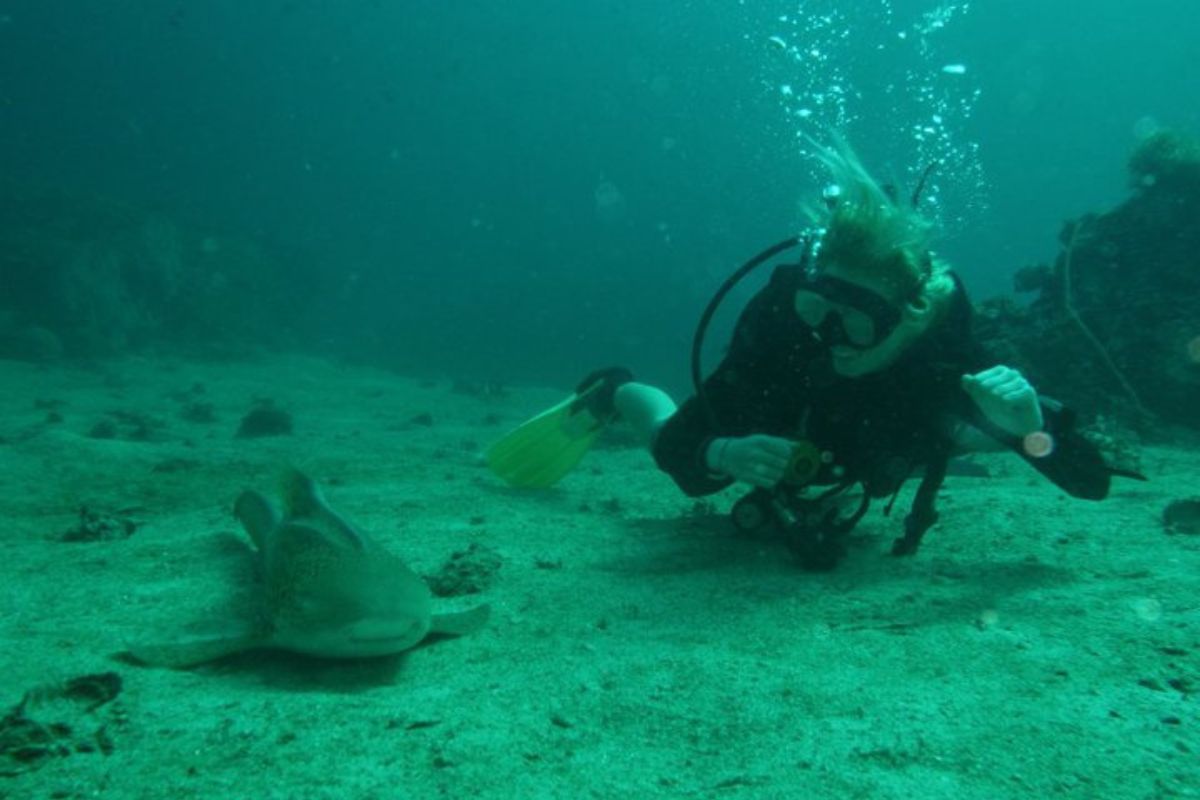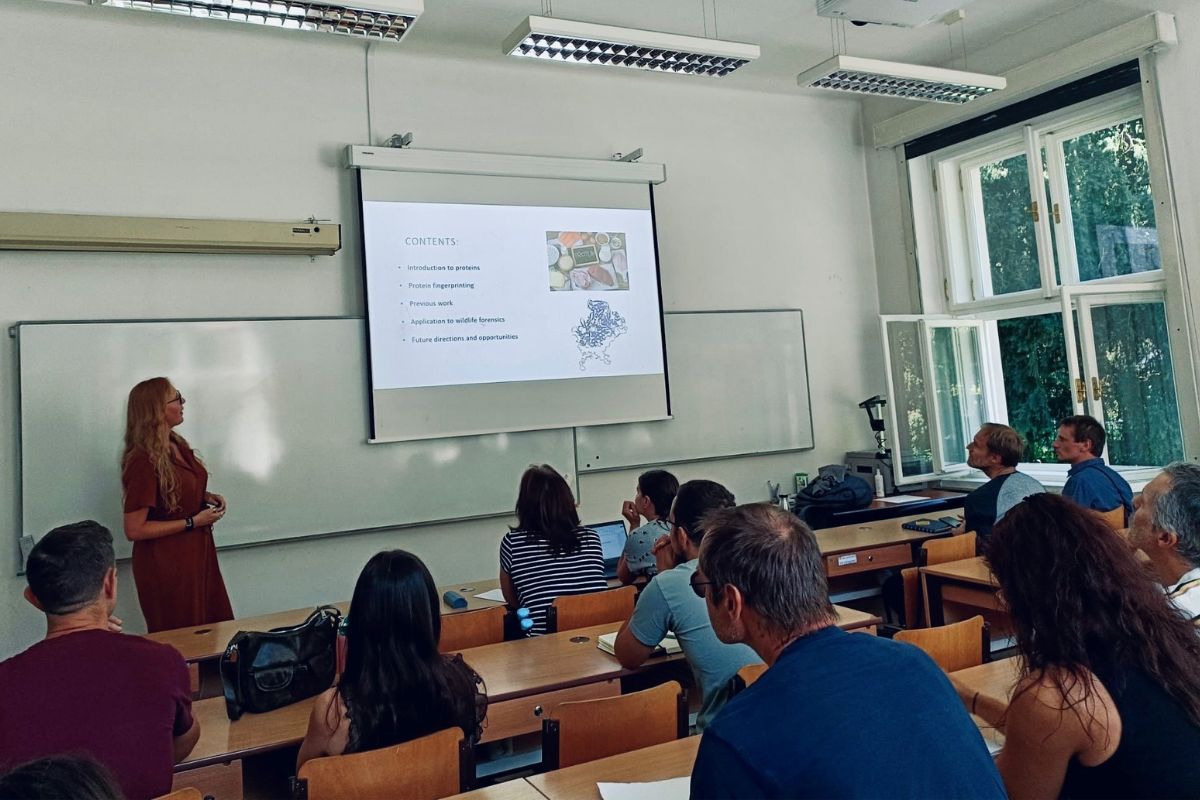Zoologist explains how 'protein fingerprinting’ is helping track history of species and tackle wildlife crime
A zoologist at the University of Chester has told how using a “molecular time machine” can shed new light on the history of animals, tackle wildlife crime and detect food fraud.

Senior Lecturer Dr Virginia Harvey has been travelling the globe, researching how analysing proteins in species can be a powerful tool in wildlife forensics.
While DNA analysis is really important for species identification and conservation, there are cases where samples are too degraded for this to be viable. In such cases, protein analysis – a relatively new and still developing technique – is now providing important clues in identifying and tracing animal products.
Virginia's wildlife forensics findings were presented in a lecture recently delivered at Charles University in Prague, the Czech Republic, where those in attendance heard how the ‘protein fingerprinting’ technique can be used to track species from thousands of years ago, and has real-world applications.

Virginia said: “I’ve been fortunate to work on some really exciting projects that combine science, archaeology, conservation and travelling. I specialise in using proteins for species identification, which is a valuable technique when samples are too degraded or fragmented for morphological identification or DNA analysis.
“All organisms have proteins as these are the building blocks for life. Although DNA analysis has been practised for 50 years or more, protein analysis has only really been developing in the last 15 years or so, so it is a much younger technique – and therefore its potential is still being investigated through researchers all over the world.
“For example, during my PhD, I analysed proteins preserved in ancient turtle bones to help identify which species of turtles were being harvested 2,000 years ago in Florida and the Caribbean. I have also used proteins for species identification in fishes, to provide the proof of concept that we can potentially reconstruct past species distributions, even when DNA does not survive in these samples.
“It’s like having a molecular time machine. We can see what species were present, hundreds or even thousands of years ago, which helps us understand how human activity has shaped biodiversity over time.”

Virginia added her research has taken her to places she’s only ever dreamed of travelling to: “Another project I loved was looking at sub-fossil bones from the Cayman Islands for my Master of Philosophy (MPhil), which also involved crawling around the small and humid caves! By analysing tiny bone fragments from these cave systems, we were able to develop protein-based identifications for both endemic species, most of which are now extinct, and introduced species which now dominate the landscape. It is a powerful reminder of just how much influence people can have on fragile island ecosystems.”
Virginia’s research is also applicable in a modern-day setting, helping to detect potential instances of wildlife crime. She said: “More recently, I’ve been applying similar biomolecular tools to wildlife forensics where I'm interested in identifying illegal wildlife products or evidence of mislabelling in the food industry.
“Mislabelling in particular is incredibly common for fish products, where research shows that, on average, one quarter of every fish product sold has been mislabelled in some way, whether that is a species substitution or switching wild-caught for farmed fish for financial gain for the sellers. My research feels a little bit like detective work, where I use these molecular clues to obtain species identification, which can then be used to answer questions about our relationship with the natural world.”
Virginia is currently working with Master’s students on DNA and protein-related research projects, as well as with undergraduate dissertation students, and is always interested in hearing from students who would be interested in doing a Master’s or PhD under her supervision.
For more information about Zoology and Animal Science courses at the University of Chester, visit: https://www.chester.ac.uk/study/undergraduate/zoology-and-animal-science/ and follow their updates on the Natural Sciences UoC Instagram page: https://www.instagram.com/natural_sciences_uoc/.
Main image: Dr Virginia Harvey in Australasia.
Image 2: Dr Virginia Harvey’s research has taken her to Wyoming (left) and Kenya (right).
Image 3: Dr Virginia Harvey giving the lecture at Charles University.